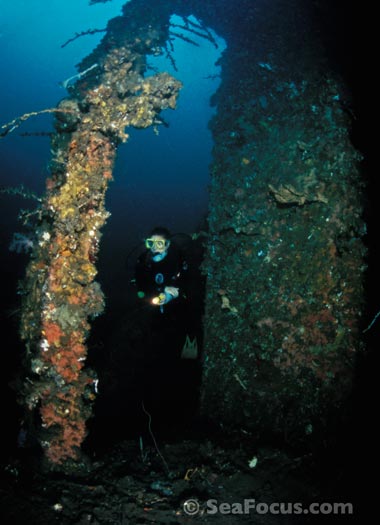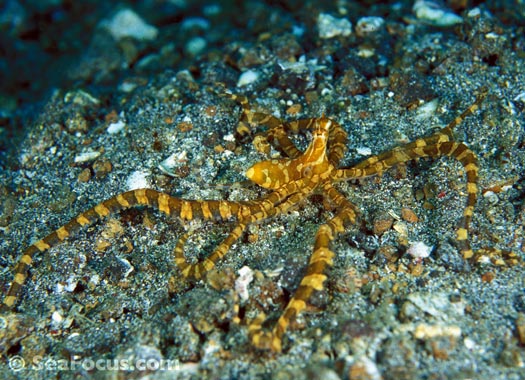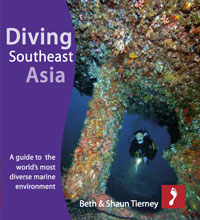
|
|
||||||||||||||||||||||||||||||||||||||||||
| Diving the Lembeh Straits | Eastern dive sites | Sulawesi, Indonesia |
||||||||||||||||||||||||||||||||||||||||||
 |
||||||||||||||||||||||||||||||||||||||||||
|
||||||||||||||||||||||||||||||||||||||||||
| Lembeh Straits dive photo gallery | Scuba diving features | |||||||||||||||||||||||||||||||||||||||||
|
||||||||||||||||||||||||||||||||||||||||||
| INFORMATION | EXPLORE | |||||||||||||||||||||||||||||||||||||||||
|
Lembeh Island is about 12 km from Sulawesi. The topography is hilly but less so than the mountainous landscape opposite. Because the prevailing winds and currents come mostly from the north west, dive sites along the island's coast have developed differently to those on the other side of the Straits – there are pinnacles with steep walls that drop to 40 metres and many dives in small inlets rich with hard corals and many hues of soft coral trees. There are pristine fans, plenty of fish swimming off the walls and even the occasional manta ray. Of course, there are still untold numbers of small and whacky creatures but these are often seen on lighter-toned sand, giving this side a more typical reef feel. The channel is also a busy shipping lane and there are several wrecks to dive near the southern end of Lembeh Island. These include the Mawali Wreck, a World War II Japanese steel freighter and the Kapal Indah Wreck, a cargo ship. A third wreck, the Bimoli, is much closer to Bitung on the west of the Straits. |
|
|||||||||||||||||||||||||||||||||||||||||
|
PROS and CONS
|
If you are interested in marine biology or underwater photography this is THE place to dive. Since the Lembeh Straits were first discovered, they have become quite busy but operators cooperate with each other so you won't find the dives crowded. For those of us who went before it became popular, the Straits seem rather lively. |
|||||||||||||||||||||||||||||||||||||||||
|
SCUBA DIVING
|
Visibility is never brilliant and there can be currents and rough water but this is just about the best muck diving you will find and seeing all or most of the unusual animals that live here is pretty much guaranteed. |
|||||||||||||||||||||||||||||||||||||||||
|
OPINION
|
We first dived the Lembeh Straits well over a decade ago when it was an unknown dive destination – and we have to credit the area (and the great Larry Smith) as being the instigator of our interest in marine biology. Choosing between staying on the mainland coast or on Lembeh Island can only be a personal thing. The views from Lembeh looking west can be stunning, but sunrise from the mainland isn't half bad either. | |||||||||||||||||||||||||||||||||||||||||
| MAP | ||||||||||||||||||||||||||||||||||||||||||
|
|
|
||||||||||||||||||||||||||||||||||||||||
|
|
||||||||||||||||||||||||||||||||||||||||||
















